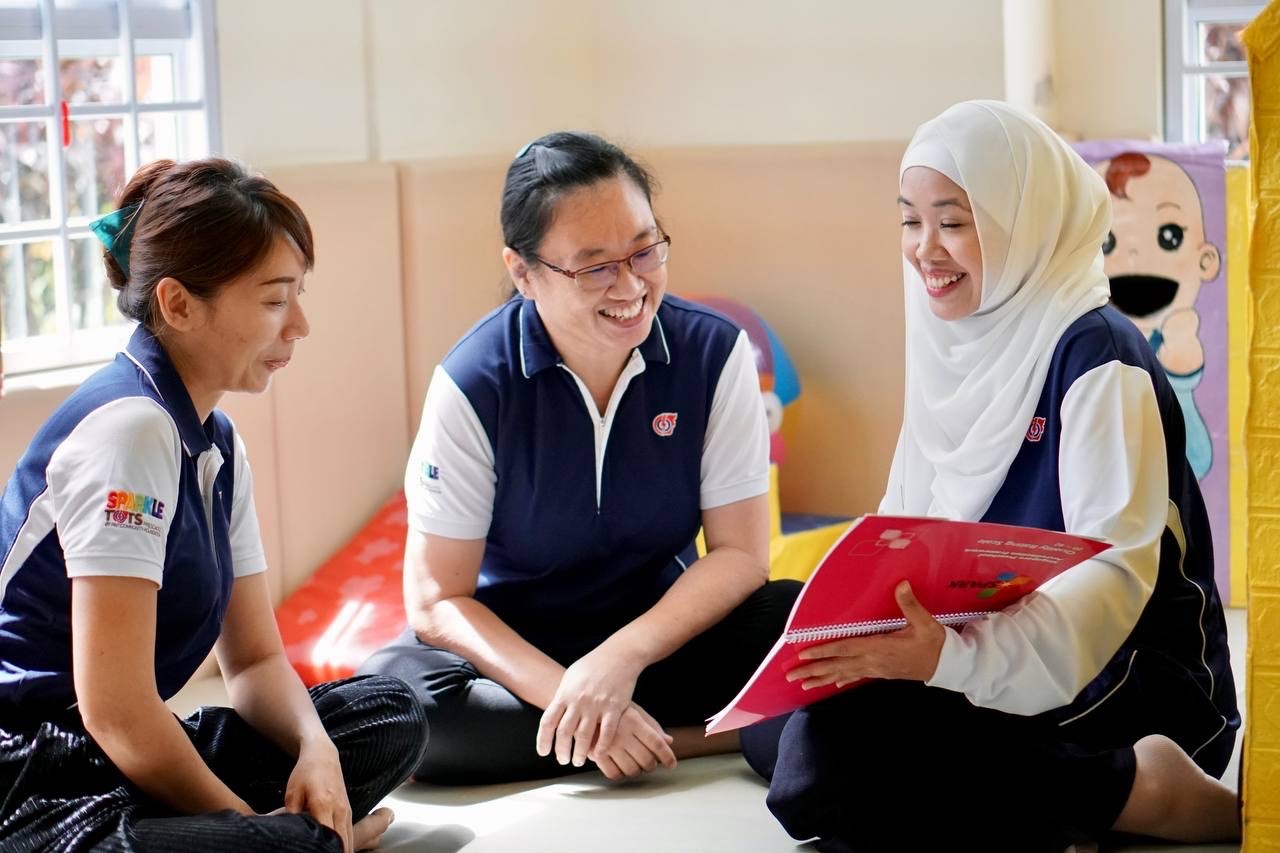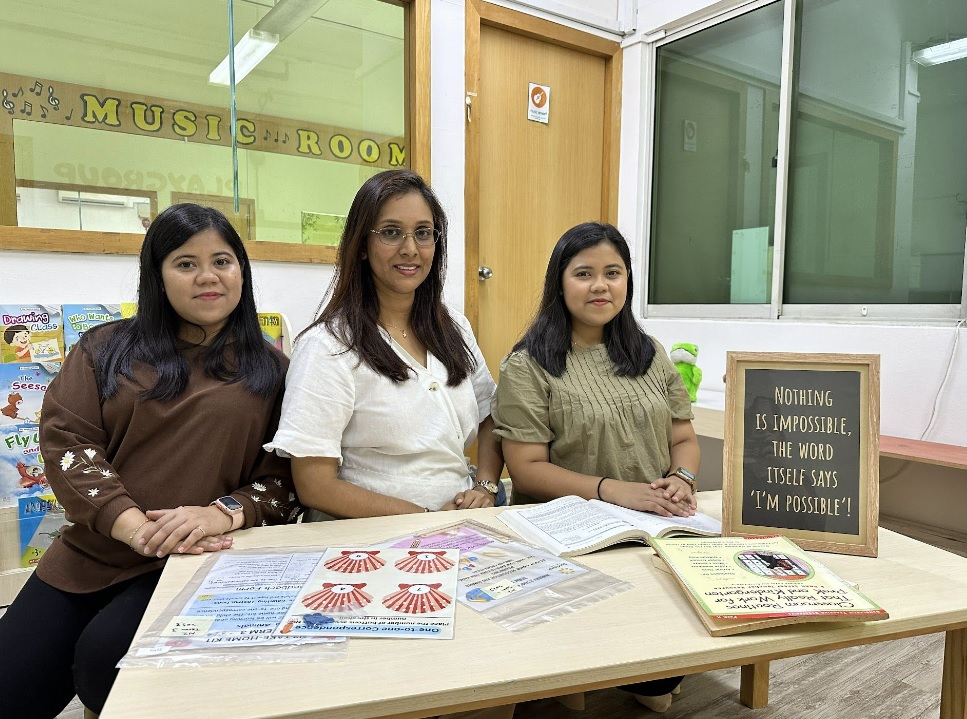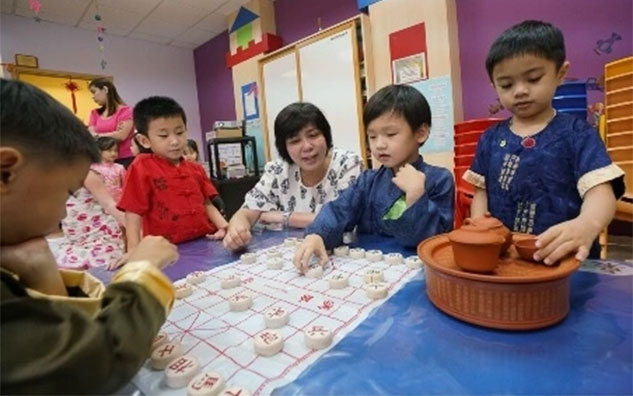Let's Make a Mess

Put away those books and educational apps - it's time to create a sensory table for your child!
Children are concrete learners, says educator Dr Rebecca Chan, and they learn best through active participation - manipulating real objects (as far as possible) to stimulate the five senses critical for information processing. And a sensory table - which is essentially a craft table filled with materials that appeal to the five senses - does just that.
"Sensory play promotes exploratory behaviour that leads to goal-directed behaviour," explains Dr Chan. "Children may explore 'flour' by running it through with their fingers, scooping, transferring or tossing the flour in the air. However, they become more goal-directed when they start pouring water and try to mould something out of a lump of dough. Sensory play provides many first-hand experiences and tangible objects for children to base their learning on."

Early childhood educator and mother-of-two Pamela Tessman agrees. "Sensory play is important to a child's development in many ways. By touching, smelling, listening, tasting, and watching, he becomes more aware of how things work. When children are able to explore this way often, they gain better skills at learning through their senses," she explains. "They conduct their own science experiments through their own experiences with substances. For example, a child using a spray bottle on dirt begins to understand that mud is made by mixing dirt and water together."
MAKE YOUR OWN SENSORY TABLE
There are no set rules when it comes to making a sensory table - it's easy to create one from simple items found around the house. Be creative, and think about what you would like your child to learn and discover.
"It is most appropriate to put materials that are meaningful to children, materials that are familiar and relevant to children's daily lives because new development is based on previous development. Gradually, introduce novel materials in addition to the familiar ones to extend their learning experiences," says Dr Chan.
Consider safety, hygiene and cultural factors when constructing a table - avoid common allergens (such as peanuts), and choose objects that are not likely to become choking hazards (such as small marbles). Supervise your child at all times.
Ms Tessman loves using themed sensory tables to guide development. "You can never go wrong with water," she enthuses. "Let the children come up with ideas of what to add to it. Boats? Animals? Nature items? Things that float or sink? The possibilities are endless!"
Here are a few more of Ms Tessman's creative ideas:
Make mud out of corn starch and water! Let you child experiment with different ratios of corn starch to watch to create some fun textures.
Create bins or bowls of rice, dried corn kernels, dried beans/ spilt peas. Add fun toys such as scoops, funnels, or even toy trucks/ machines, and encourage your child to dig, scoop and measure!
DEVELOPMENTAL BENEFITS OF A SENSORY TABLE
According to Dr Chan, sensory play can boost your child's physical development (fine and gross motor skills), intellectual development (language skills, thinking and problem-solving skills), as well as emotional and social development. Here's how:
PHYSICAL DEVELOPMENT
Fine Motor Skills
Pouring water from one container to another requires focus and concentration to maintain good control without spilling the water. Transferring objects using spoons or tongs also boosts hand-eye coordination.

Gross Motor Skills
Working with a slab of clay requires bid muscle movements that develop gross motor skills. Sometimes, a child may stamp on it with the feet to flatten the clay or use large arm movements to knead the clay.
INTELLECTUAL DEVELOPMENT
Language
Encouraging a child to describe the texture, look or feel of a material, or the sound or taste of it, helps boost language development and expands vocabulary.
Thinking
Sometimes, a child will try to make sense of where exactly the smell is coming from the substance - for example, from the flesh of the fruit of the seed? He may wonder why the texture is rough on the outside but smooth on the inside - think of rambutan - or the change of state when flour is mixed with water.

"I once watched two children cutting a real apple with a plastic knife. They were so amazed to find that the surrounding core of the apple is 'greenish' that one boy took half the apple and went around the class showing his friends: "Look, is green! See, is green!" It was fascinating to witness the simple joy of discovery that most adults take for granted," says Dr Chan.
SOCIO-EMOTIONAL DEVELOPMENT
Sensory play promotes not only the social and emotional joy of discovery but encourages a child to approach learning with a sense of wonder and perseverance - for example, when the children were "sawing" through the apple with a plastic knife. Discovering novel facts about the world excites a child, and enhances his sense of self-esteem, thus positively encouraging life-long learning.

ENGAGE YOUR CHILD
So you've put together a sensory table - now what? The best way to engage your child is to let him take the lead, suggests Dr Chan. "The whole point of setting up a sensory table is about learning in the moment. An overly structured engagement defeats the purposes of letting the senses speak to the child," she advises.
"Support your child by helping to provide the frame for his experiences - perhaps you can help him find the appropriate words to describe his discoveries. But don't forget to adopt the 3Rs - responsive, reciprocal and respectful - when engaging with your child," says Dr Chan.
Children are often very curious about what is in a sensory table, says Ms Tessman, who suggests talking about what you see and feel and smell. Or you can try talking about what you see your child is experimenting with. "This will help you child to place words with what they are finding," she says.

"If the child is able to tell you, ask open-ended questions such as 'what does that feel like?' or 'how did that happen?' Play with your child instead of watching. Children become more engaged with the activity if there is someone playing and discovering with them; someone to watch and learn from. So, get excited with them and have fun!"
You may also like

From Cabin to Classroom: Journey of an Outstanding Early Childhood Educator
The PDP modules allowed me to get creative with lesson ideas and keep up with the ever-changing Early Childhood sector.

Ms Farhana Binte Mohamed Hassan
Early Years Educator - PCF Sparkletots @ Pioneer Block 987D (CC)

Translating Passion to Profession: Angelene, Nurziana and Sharidah's Voyage in Early Childhood Education
PDP has undoubtedly deepened the skill sets and enriched the expertise of exemplary educators such as (Nur)Ziana and Sharidah

Ms Jegatheswary
Cluster Head at Sunflower Preschool

An Unwavering Passion
You need to have a passion for children, and I don’t mean just teaching them, but caring for them as well

Mrs Elsie Yee
Principal - Faith Kindergarten